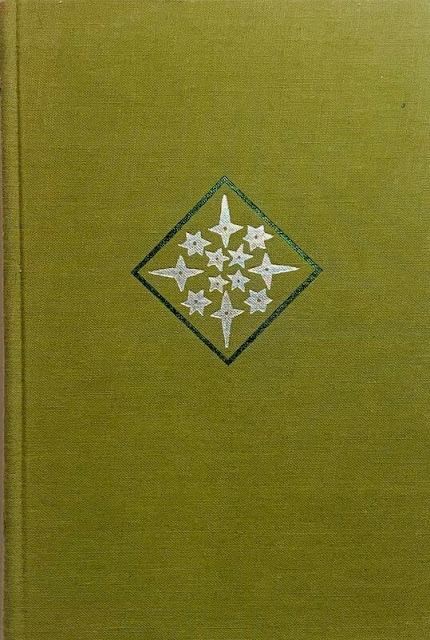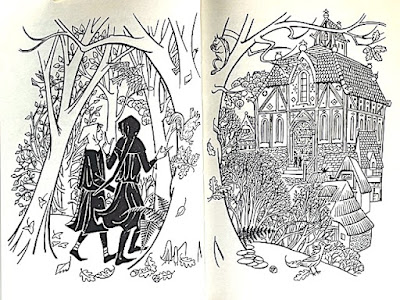J.R.R. Tolkien's The Lord of the Rings had touched off a renaissance for fantasy literature. Publishers were agog to get something onto the racks that smacked of fantasy, whether it was in the vein of high fantasy as is Tolkien's classic or of a more blood-handed quality such as the works of Robert E. Howard, there was an absolute hunger for such stuff. But how to bring The Lord of the Rings to the big screen.
It seemed too large a tale for the cinema, at least the cinema of the 70's which had seen the collapse of the studio system and the rise of independent filmmakers. Star Wars had pointed the way forward for movies, and multiple installments of epic stories seemed viable. So, it was decided to make The Lord of the Rings into a movie after all in 1978. Peter Beagle, author of The Last Unicorn was brought in to revise the screenplay by Chris Conkling. Animation was the format the format selected, and the director would be Ralph Bakshi.

Ralph Bakshi was a wild card. He was a veteran animator, having risen up in Terrytoons and had gained some cache with is creation of The Mighty Heroes and other projects. He'd broken into cinema with Fritz the Cat which brought Robert Crumb's feline avatar to a public ready for the adult nature of the storytelling. Bakshi knew how to get an animated feature made and delivered, and outside the Disney studios he was nearly the only game in town. Artist Mike Ploog's work showed up a lot in the designs. He'd worked with Bakshi on Wizards, a science fiction fantasy which had the misfortune to debut the same week as Star Wars. British actors were brought on to do the voices. It was an epic effort to bring an epic story to the screen, and it was originally intended to be the first of two parts. Alas, we never go that sequel, at least not by the Bakshi team.

The movie is criticized today and was criticized at the time for the extensive use of rotoscoping to make the animation work, and the to give the work a greater sense of reality. Rotoscoping is looked down upon despite being one of the earliest techniques in animation and was used extensively by the Fleischer Studios in the 30's. That said, there more than a few sequences in the movie which don't really work. The rotoscoping doesn't always blend with the traditional animation and creates a jarring effect on the viewer. This movie unlike
Wizards which used much the same styles required an approach which didn't take the viewer out of the movie.
Here is an interview with Bakshi talking about the film.

I give the movie high marks for its realization of the Shire and the bucolic regions adjacent to it. There are some gorgeous scenes with our characters moving through them. As the movie goes along and we get further away, that kind of thing diminishes. The Black Riders are also effectively realized in some places. They are favorites of mine, truly frightening creations. Less successful is Sam Gamgee who comes across as a goofball. Frodo is okay but he and the other Hobbits look like they are about thirteen. The battle at the end of the movie is the low point, with the Orcs poorly realized and the sense of animation minimized. The strength of this production are the outstanding background paintings which successfully create a compelling world, not unlike the masterful backgrounds in the classic King Kong almost become a character. The movie ends abruptly with Gollum leading Frodo and Sam into Shelob's clutches and the heroes successful at Helm's Deep.

Despite a potent advertising program, the movie failed to live up to expectations in theaters. The sequel was cancelled, and Tolkien fans were left hanging with only half the story told. That is until the Rankin-Bass operation stepped in. They'd brought The Hobbit to the screen some few years before and now they'd wrap up Tolkien's greater epic in the bargain. But it wasn't part of a plan necessarily.

The Return of the King from 1980 has the Rankin-Bass operation picking up the story just about where Bakshi's movie had left off more or less with Frodo and Sam having survived Shelob but Frodo having been captured by Orcs. It is important to note that the production was not intended as a sequel to the Bakshi film. It's merely a fluke that the Rankin-Bass outfit started the story just about where Bakshi left off. The original title was Frodo -The Hobbit II, but better heads prevailed. The style shifted back to the Arthur Rackham inspired character designs, and the ambition was singular, to finish the story. Like The Hobbit before the Tolkien estate did not approve of this little outing and filed suit, but a deal was cut.

Joining veterans from The Hobbit such as Orson Bean (Frodo this time), John Huston (still Gandalf), and Brother Theodore (Gollum again) were Theodore Bikel (Aragorn), Roddy McDowell (Sam Gamgee), Casey Kasem (Merry Meriadoc), and others such as veterans John Stephenson and Don Messick among others. This 1980 production was done for television by the same Japanese outfit that had don The Hobbit.

People bicker about it. Consider it a weak addition to the Tolkien world, and the Tolkien Estate even tried to stop its production. But for my part, I cherish it, for all its flaws for giving the story an ending it otherwise would not have. I rather liked The Hobbit and I like this one, though it has a harder path to walk. Despite the decision to only adapt the last novel for the sake of time, there still seems to be a terrible feeling of padding in the beginning of the story. For Tolkien fans today it might seem a weak offering, but for us then it was a triumph if only a small one. The epic saga had been transformed into a story which walked and talked, if imperfectly.
Two decades later, a New Zealand director would take on the story again, this time armed with new-fangled computer technology and people eager to do a greater justice to J.R.R. Tolkien's great story. But we'll get to that tomorrow. But first a song.
Frodo of the Nine Fingers
Music by Maury Laws
Lyrics by Jules Bass
Sung by Glenn Yarbrough
When Bilbo found that shiny ring
In Gollum's cave of gloom,
He never thought that it would turn
Into a ring of doom.
The Dragon Smaug, the Spiders too,
The Goblish, the Evin-King,
They came to know the power of
The Hobbit and his ring.
Frodo of the Nine Fingers
And the ring of doom.
It started with a Hobbit in
Gollum's cave of gloom.
The power of the ring, it grew,
And Gandalf sat in thought.
He knew that it must be destroyed
In fires where it was wrought.
For is in evil hands it fell,
The earth would know its end.
No force of arms would win the day,
No army could contend.
Frodo of the Nine Fingers
And the ring of the doom
Accepted a heavy burden
For the fires to consume.
Frodo of the Nine Fingers
And the ring of doom.
Why does he have nine fingers?
Where is the ring of doom?
Rip Off





















.jpg)













.jpg)
.jpg)
.jpg)
















